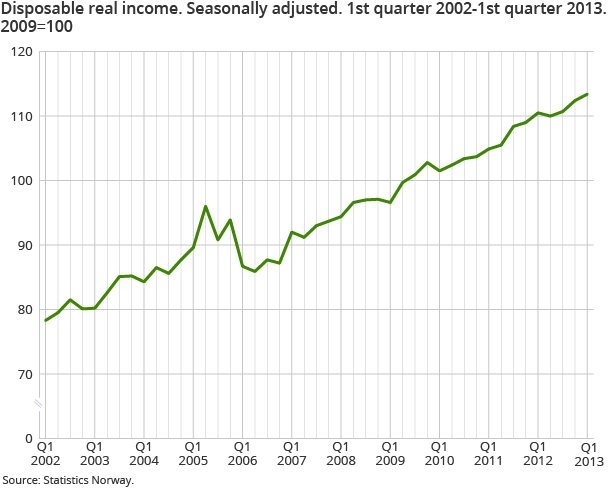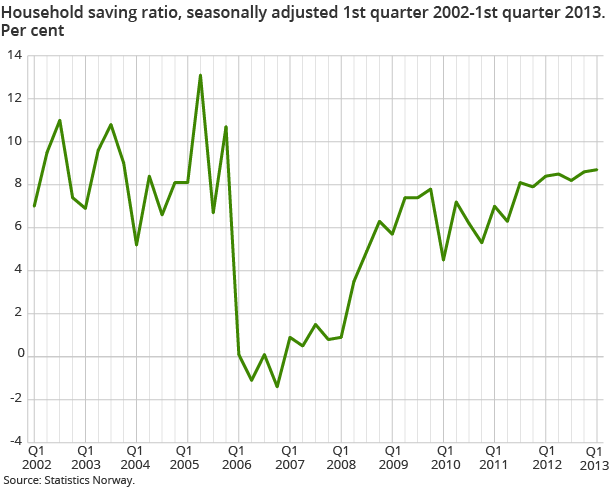Content
Published:
This is an archived release.
Clear growth in households’ income
Disposable income in the household sector increased 1.9 per cent from the 4th quarter of 2012 to the 1st quarter of 2013, according to seasonally-adjusted figures. After adjusting for inflation, real disposable income increased by 0.9 per cent in the same period.
Compensation of employees, which is the largest income component of households, rose 1.6 per cent from the 4th quarter of 2012 to the 1st quarter of 2013. Payments and benefits from general government were up 1.5 per cent in the same period. An increase in retirement pensions contributed to this growth. Property income received and property income paid were slightly lower compared to the 4th quarter. Households’ income from business activity declined 1 per cent.
Household final consumption expenditures grew 1.5 per cent seasonally-adjusted, and this increase was slightly weaker than the growth in disposable income, which led to a higher saving in the 1st quarter of 2013 compared with the 4th quarter of 2012.
Revisions in the previously released data
Quarterly sector accounts are based on preliminary calculations. The uncertainty in the last quarter is the largest. New information is continuously being integrated into the figures, which could cause revisions in the previously released data. The figures for Annual non-financial sector accounts, national accounts, on 2012, are now updated. Quarterly sector accounts are also consolidated against the data from the quarterly national accounts data. When the last quarters of the unadjusted series are updated, seasonally-adjusted series may also be revised backwards.
Additional information
Contact
-
Pål Sletten
E-mail: pal.sletten@ssb.no
tel.: (+47) 99 29 06 84
-
Nils Amdal
E-mail: nils.amdal@ssb.no
tel.: (+47) 91 14 91 46


